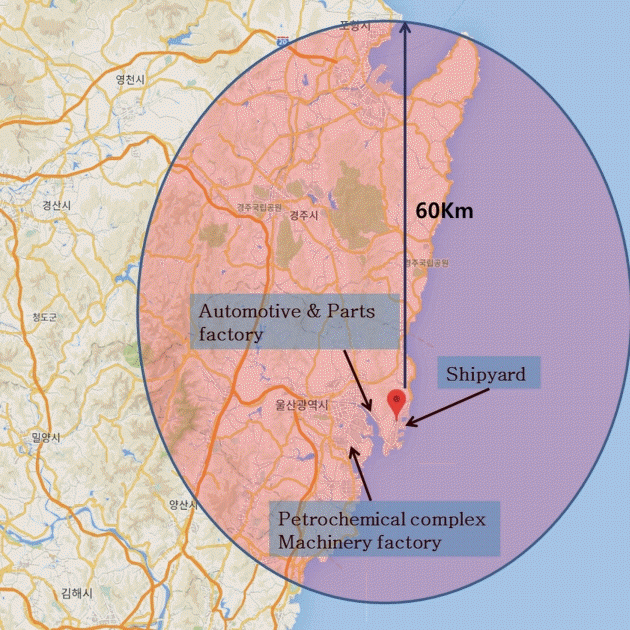1. Bach JA, Leskovan JJ, Scharschmidt T, Boulger C, Papadimos TJ, Russell S, et al. The right team at the right time - Multidisciplinary approach to multi-trauma patient with orthopedic injuries. Int J Crit Illn Inj Sci. 7:32–37. 2017.

2. Baker SP, O’Neill B, Haddon W Jr, Long WB. The injury severity score: a method for describing patients with multiple injuries and evaluating emergency care. J Trauma. 14:187–196. 1974.
3. Bonatti H, Calland JF. Trauma. Emerg Med Clin North Am. 26:625–648, vii. 2008.

4. Champion HR, Sacco WJ, Carnazzo AJ, Copes W, Fouty WJ. Trauma score. Crit Care Med. 9:672–676. 1981.

5. Cherry RA, King TS, Carney DE, Bryant P, Cooney RN. Trauma team activation and the impact on mortality. J Trauma. 63:326–330. 2007.

6. Coronado VG, Xu L, Basavaraju SV, McGuire LC, Wald MM, Faul MD, et al. Surveillance for traumatic brain injury-related deaths--United States, 1997-2007. MMWR Surveill Summ. 60:1–32. 2011.
7. El Mestoui Z, Jalalzadeh H, Giannakopoulos GF, Zuidema WP. Incidence and etiology of mortality in polytrauma patients in a Dutch level I trauma center. Eur J Emerg Med. 24:49–54. 2017.

8. Fröhlich M, Lefering R, Probst C, Paffrath T, Schneider MM, Maegele M, et al. Epidemiology and risk factors of multiple-organ failure after multiple trauma: an analysis of 31,154 patients from the TraumaRegister DGU. J Trauma Acute Care Surg. 76:921–927. discussion 927-928. 2014.
9. Ghajar J. Traumatic brain injury. Lancet. 356:923–929. 2000.

10. Howard JT, Kotwal RS, Santos-Lazada AR, Martin MJ, Stockinger ZT. Reexamination of a battlefield trauma golden hour policy. J Trauma Acute Care Surg. 84:11–18. 2018.

11. Humphreys I, Wood RL, Phillips CJ, Macey S. The costs of traumatic brain injury: a literature review. Clinicoecon Outcomes Res. 5:281–287. 2013.

12. Jennett B, Bond M. Assessment of outcome after severe brain damage. Lancet. 1:480–484. 1975.
13. Kane G, Wheeler NC, Cook S, Englehardt R, Pavey B, Green K, et al. Impact of the Los Angeles county trauma system on the survival of seriously injured patients. J Trauma. 32:576–583. 1992.

14. Kim Y, Jung KY, Cho KH, Kim H, Ahn HC, Oh SH, et al. Preventable trauma deaths rates and management errors in emergency medical system in Korea. J Korean Soc Emerg Med. 17:385–394. 2006.
15. Maio RF, Burney RE, Gregor MA, Baranski MG. A study of preventable trauma mortality in rural Michigan. J Trauma. 41:83–90. 1996.

16. Mann NC, Cahn RM, Mullins RJ, Brand DM, Jurkovich GJ. Survival among injured geriatric patients during construction of a statewide trauma system. J Trauma. 50:1111–1116. 2001.

17. Moon S, Lee SH, Ryoo HW, Kim JK, Ahn JY, Kim SJ, et al. Preventable trauma death rate in Daegu, South Korea. Clin Exp Emerg Med. 2:236–243. 2015.

18. Mullins RJ, Veum-Stone J, Helfand M, Zimmer-Gembeck M, Hedges JR, Southard PA, et al. Outcome of hospitalized injured patients after institution of a trauma system in an urban area. JAMA. 271:1919–1924. 1994.

19. Newgard CD, Meier EN, Bulger EM, Buick J, Sheehan K, Lin S, et al. Revisiting the “Golden Hour”: an evaluation of out-of-hospital time in shock and traumatic brain injury. Ann Emerg Med. 66:30–41, 41.e1-e3. 2015.

20. Palmer C. Major trauma and the injury severity score--where should we set the bar? Annu Proc Assoc Adv Automot Med. 51:13–29. 2007.
21. Park JM. Outcomes of the support services for the establishment of regional level 1 trauma centers. J Korean Med Assoc. 59:923–930. 2016.

22. Ponsford J, Olver J, Ponsford M, Nelms R. Long-term adjustment of families following traumatic brain injury where comprehensive rehabilitation has been provided. Brain Inj. 17:453–468. 2003.

23. Saatman KE, Duhaime AC, Bullock R, Maas AI, Valadka A, Manley GT, et al. Classification of traumatic brain injury for targeted therapies. J Neurotrauma. 25:719–738. 2008.

24. Sampalis JS, Lavoie A, Boukas S, Tamim H, Nikolis A, Fréchette P, et al. Trauma center designation: initial impact on trauma-related mortality. J Trauma. 39:232–237. discussion 237-239. 1995.
25. Schluter PJ. The Trauma and Injury Severity Score (TRISS) revised. Injury. 42:90–96. 2011.

26. Teasdale G, Jennett B. Assessment of coma and impaired consciousness. A practical scale. Lancet. 2:81–84. 1974.
27. Teixeira PG, Inaba K, Hadjizacharia P, Brown C, Salim A, Rhee P, et al. Preventable or potentially preventable mortality at a mature trauma center. J Trauma. 63:1338–1346. discussion 1346-1347. 2007.

28. Ulvik A, Kvåle R, Wentzel-Larsen T, Flaatten H. Multiple organ failure after trauma affects even long-term survival and functional status. Crit Care. 11:R95. 2007.

29. Yoon HD. Background and progress of regional trauma center development. J Korean Med Assoc. 59:919–922. 2016.






 PDF
PDF Citation
Citation Print
Print




 XML Download
XML Download